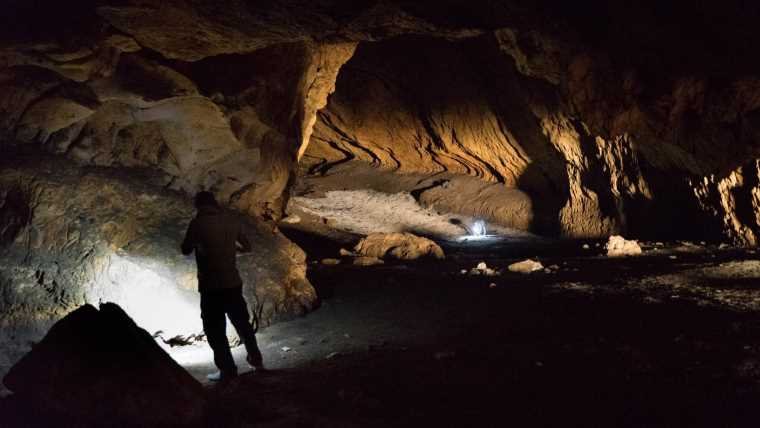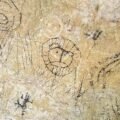New research into a 70,000-year-old mystery behind the first migration of modern humans out of Africa has proposed that humanity actually existed as a single homogenous population in the Persia Plateau for millennia before its ultimate expansion across the globe.
Decades of previous research indicate that Homo sapiens first left Africa around 70,000 years ago. Still, most of the evidence for our species’ genetic diversification via its expansion into Europe, Asia, and Oceania only dates back about 45,000 years. Now, a team of researchers combining genetic, palaeoecological, and archaeological data says they have solved this 70,000-year-old mystery by showing that humanity’s ancient migration essentially paused on the Persian Plateau for over 20,000 years.
“The ancestors of all present-day Eurasians, Americans, and Oceanians moved out of Africa between 70 and 60 thousand years ago,” explains a press release announcing the new findings. “After reaching Eurasia, these early settlers idled for some millennia as a homogeneous population in a presumably localized area before expanding their range across the whole continent and beyond.”
Study Examined DNA From Modern and Ancient Populations
To understand how one set of data could point to expansion 70,000 years ago while the evidence for genetic diversification into the different populations of humans spread across the globe, the researchers behind the study looked at genetic evidence gathered from locals living in the region. Archaeological and paleontological data had previously set the place where that divergence occurred as the Persian Plateau.
Next, the researchers compared that data against ancient DNA also found in the region to connect modern populations to an original “hub” population that left Africa. According to the study’s lead author, Leonardo Vallini of the University of Padova, Italy, that work was particularly challenging.
“The most difficult part has been to disentangle the various confounding factors constituted by 45 thousand years of population movements and admixtures that took place after the Hub was settled,” Vallini said.
Fortunately, since genetic science has advanced considerably since the idea of a hub population on the Persian Plateau first emerged, the researchers were able to date the arrival of the hub population to around 70,000 years ago. They were also able to show that the population remained in place for millennia before beginning the long trek across the globe that resulted in the various worldwide human populations we see today.
A second palaeoecological analysis of ancient plant DNA and the surrounding environs supported these findings by showing that the Persian Plateau was more conducive to long-term human habitation than other parts of ancient East Asia. Combined with the genetic data and archaeological evidence showing human occupations of the area at the time, the researchers determined that they had successfully solved this 70,000-year-old mystery.
“With our work, we found a home to 20,000 years of shared history between Europeans, East Asians, Native Americans, and Oceanians,” said the study’s senior author, Professor Luca Pagani. “This leg of the human journey out of Africa is fascinating since it is the one where we also met and mixed our genes with the ones of Neanderthals”
Vallini concurred, noting that “the discovery elucidates a 20,000-year-long portion of the history of Homo sapiens outside of Africa, a timeframe during which we interacted with Neanderthal populations, and sheds light on the relationships between various Eurasian populations, providing crucial clues for understanding the demographic history of our species across Europe, East Asia, and Oceania.”
New Solution to 70,000-Year-Old Mystery Challenges Previous Understandings of Human Expansion
In their published study, which appears in the journal Nature Communications, the researchers offer a detailed account of their research and methods, which led to the potentially controversial solution to this 70,000-year-old mystery.
“This revelation sheds new light on the complex journey of human populations, challenging previous understandings of our species’ expansion into Eurasia,” they explain.
Moving forward, the research team believes their work can function as a figurative jumping-off point for future research, just as the Persia Plateau offered a physical location for the beginning of humanity’s global expansion.
“Our multidisciplinary study provides a more coherent view of the ancient past, offering insights into the critical period between the Out of Africa expansion and the differentiation of Eurasian populations,” said study co-author Professor Michael Petraglia, Director of Griffith University’s Australian Research Centre for Human Evolution. “The Persian Plateau emerges as a key region, underlining the need for further archaeological explorations.”
Christopher Plain is a Science Fiction and Fantasy novelist and Head Science Writer at The Debrief. Follow and connect with him on X, learn about his books at plainfiction.com, or email him directly at christopher@thedebrief.org.

